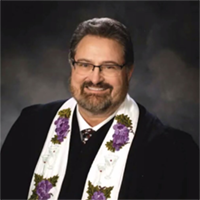Less meetings, fewer reports, get more done!
The classic church adminstrative structure is too big and cumbersome in today's fast-paced world. To thrive, churches need the ability to make quick decisions, remain flexible, and stay adaptable. It's time to move your church to a more streamlined organizational structure called Simplified Accountable Structure (SAS).
-
Fewer meetings
-
Less reporting
-
Faster decision making
-
Greater innovation
-
Grace-filled accountability
-
Shared goals
-
Fosters unity
What is SAS?
Simplified Accountable Structure (SAS) redefines how churches make decisions by simplifying the process. Unlike traditional boards, SAS brings all members, including clergy and laity, together in a single accountable structure. This means everyone shares responsibility and contributes to decision-making. SAS encourages open communication and values diverse perspectives, creating a sense of shared leadership.
In SAS, decisions are made collectively, ensuring that each member's input is considered. The structure eliminates unnecessary complexities, making it easy for everyone to understand and participate. This simplicity fosters trust and a stronger sense of community among the congregation.
CSAS operates on the principles of transparency and inclusivity, empowering every member to play a role in shaping the church's direction. By streamlining decision-making and promoting a culture of shared responsibility, CSAS represents a more accessible and effective model of church governance, fostering unity and collaboration within the community.
How to get started
It is important to remember that adopting a new system takes time in any church; change can be difficult in an entrenched culture. Most churches can expect the move to SAS to take about one year. The first step is to contact Michigan Conference SAS Coordinator Rev. Ron Brooks who can provide guidance, timelines and budget considerations. Click the Learn More button. Churches moving to SAS also need a coach and the Michigan Conference has 10 available.
Last Updated on July 25, 2025


